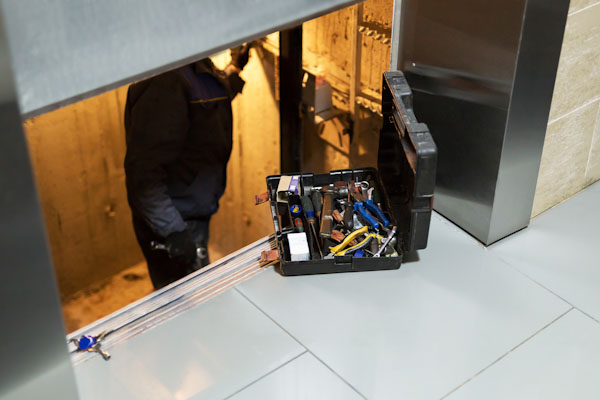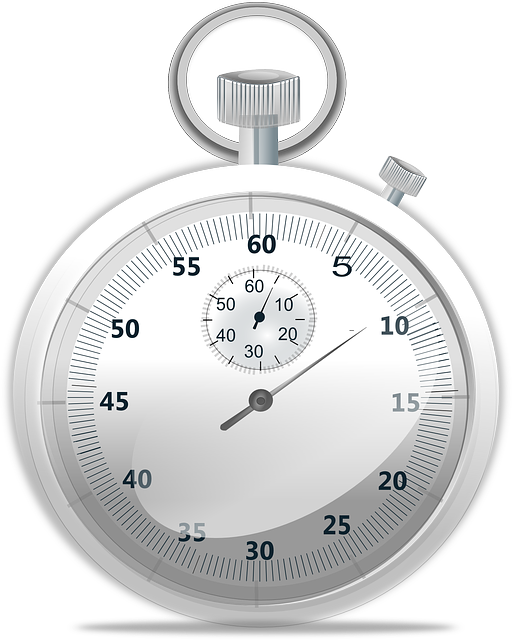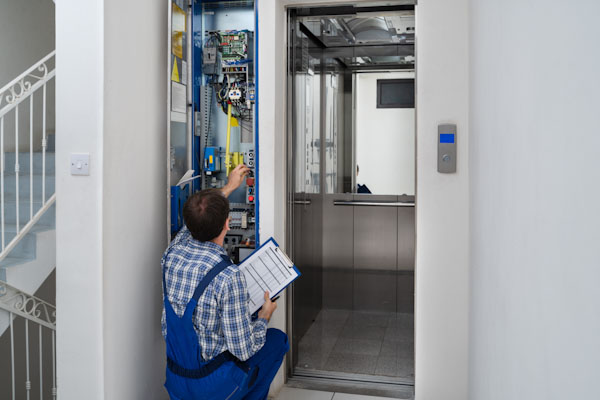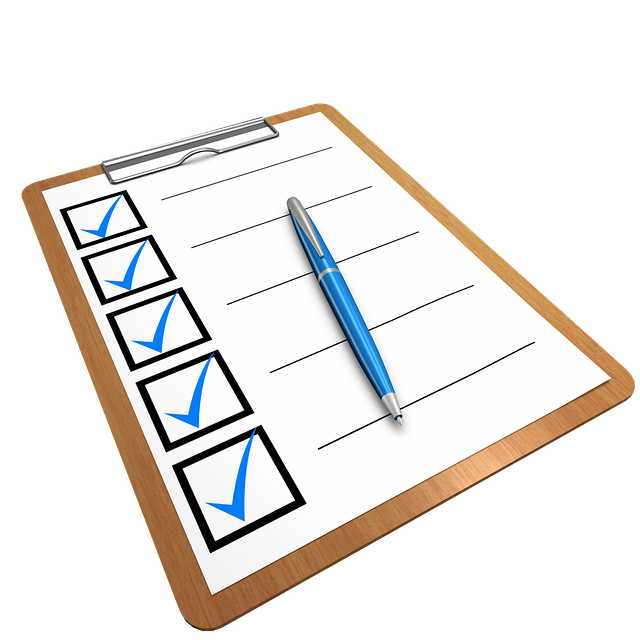Regular elevator maintenance and inspection is crucial for maintaining the safety and functionality of elevators in commercial and residential buildings. By conducting monthly maintenance and inspections, you can identify potential issues before they become major problems, ensuring the safety of anyone who uses them.
In this article we will explore the importance of regular elevator maintenance and inspection. Additionally we will explore components of an elevator inspection checklist, the frequency and timing of inspections, who should perform them, and how to document and report the inspection results.
Legal Requirements
In many jurisdictions, regular elevator inspections are mandated by law. Building owners and property managers are responsible for ensuring that elevators are inspected and maintained according to the local building regulations. Failure to comply with these requirements can result in fines, penalties, or even legal action.

These legal requirements are in place to protect the safety and well-being of elevator passengers. They ensure that elevators are regularly inspected by qualified professionals with the expertise to identify potential safety hazards. By adhering to these regulations, building owners, maintenance personnel and property managers demonstrate their commitment to providing proper access and a safe environment for everyone who uses their elevators.
Regular elevator maintenance and inspection is not just a regulatory requirement, it is a matter of safety. Elevators carry thousands of people every day, and even a minor malfunction can lead to accidents, injuries, or even fatalities. By conducting regular inspections, with the aid of an elevator inspection checklist, you can identify potential safety concerns and address them before they escalate into critical issues.
Why Monthly Maintenance & Inspections Are Crucial

Monthly inspections are crucial because they allow for the early detection of potential issues. By inspecting elevators regularly, you can identify and address any problems promptly, minimizing the risk of accidents or costly repairs.
It also enables you to comply with legal requirements and maintain accurate records of inspections.
Elevator Maintenance Inspection Topics
When it comes to elevator safety, there are numerous factors that need to be taken into consideration.
Elevator Mechanics
Inspecting the mechanical systems of the elevator is crucial for identifying any issues that may affect its performance and safety. This includes checking the braking system, motor, cables, pulleys, and counterweights to ensure that they are in proper working order.
Brakes
Faulty brakes are another safety concern that inspections help address. Brakes are crucial for the safe operation of elevators, as they prevent the elevator from moving uncontrollably or descending too quickly. Regular inspections ensure that the brakes are in good working condition, reducing the risk of accidents due to brake failure.
When inspecting the braking system, it is important to examine the brake pads for wear and tear. The brake pads should be thick enough to provide sufficient friction to stop the elevator in case of an emergency. Additionally, the motor should be inspected for any signs of overheating or unusual noises, as these could indicate a potential problem. Make sure all components are properly lubricated and greased. Inspect and record oil levels.
Cables
Worn-out cables can also pose a significant safety risk. These cables are responsible for supporting the elevator car and ensuring its smooth movement. Over time, cables can become worn or frayed, compromising their strength and reliability. Regular inspections help identify any signs of cable wear and tear, allowing for timely replacements and preventing potential accidents.
Pulleys and counterweights should also be inspected to ensure that they are properly aligned and functioning correctly.
Machine Room Electrical Wiring (and More)
The elevator mechanic should also:
- Perform electrical equipment tests e.g. control panel and box checks
- Examine electrical wiring.
- Perform Smoke detector and fire alarm system checks.
Elevator Performance
During an inspection, it’s important to evaluate the elevator’s performance, including its speed, levelling accuracy, and response time. This helps to identify any operational issues that need to be addressed promptly, such as delays in door opening or closing, unusual noises, or jerky movements.
To evaluate the elevator’s speed, a stopwatch can be used to measure the time it takes for the elevator to travel between floors. Any significant deviations from the expected speed may indicate a problem with the motor or other mechanical components.

Response time is another important factor for technicians to consider during the evaluation. The elevator control panel should respond promptly to user commands, such as pressing the floor buttons or the emergency stop button. Any delays in response time could indicate signs of a malfunctioning control system that needs to be addressed.
Car levelling accuracy can be assessed by observing whether the elevator stops at each floor precisely, without any noticeable gaps or misalignment.

Doors
One of the main safety concerns addressed by inspections is malfunctioning doors. Faulty doors can pose a serious risk to passengers, as they may not close properly or get stuck while opening or closing. Regular inspections ensure that the doors are functioning smoothly, minimizing the chances of accidents or injuries.

Inspecting Elevator Interiors and Exteriors
Inspecting the interiors and exteriors of the elevator involves checking the condition door operation of the cabin, the condition and operation of buttons and indicators, the lighting, and any signage or emergency instructions.
When inspecting the cabin, attention should be given to the flooring, walls, and ceiling. Any signs of damage, such as cracks, stains, or loose panels, should be noted and repaired. The buttons and indicators should be checked for proper operation, ensuring that they are responsive and clearly labelled.
Proper lighting is crucial for the safety and comfort of elevator users. During the inspection process, the lighting fixtures should be checked to ensure that they are functioning correctly and providing adequate illumination. Any flickering lights or burnt-out bulbs should be replaced promptly.
The inspection should include a review of any signage or emergency instructions inside the elevator. These signs should be clearly visible and easy to understand, providing important information about emergency procedures and contact numbers for maintenance or assistance.

Non-functioning emergency phones can be a serious safety issue. In the event of an emergency or elevator malfunction, passengers need a reliable means of communication and emergency phone to seek help. Regular inspections ensure that emergency phones are in good working condition, enabling passengers to quickly and easily contact the emergency services or local fire department phone line.
Inspections also verify that the elevator car’s emergency stop buttons are in proper working order, allowing passengers to halt the elevator in case of an emergency.

Additionally, inspections assess need to assess the inside the car, such as the flooring, handrails, door panels and mirrors. It is also important to check the emergency exit hatch.
Regular cleaning of the elevator’s interior are essential in maintaining a safe and pleasant environment for passengers.
Who Should Perform Elevator Inspections
Elevator inspections are best performed by trained technicians and qualified professionals who have an in-depth understanding of elevator mechanics systems and safety regulations. Let’s explore two main approaches to performing elevator inspections: hiring professional elevator inspectors and training staff for basic elevator inspections.
Hiring Professional Elevator Inspectors
Many building owners and property managers opt to hire professional, elevator maintenance and inspection companies. These companies have elevator service technicians with the expertise and experience to conduct thorough inspections of equipment and offer recommendations for repairs or maintenance. Hiring professionals ensures that inspections are carried out by knowledgeable individuals and technicians who stay up to date with ever-evolving elevator safety standards and regulations.
Training Staff for Basic Elevator Inspections
In some cases, building owners may choose to train their maintenance staff to perform basic elevator inspections. This approach can be cost-effective and efficient for routine inspections. However, it is essential to ensure that the staff members receive adequate training on elevator mechanics, safety regulations, and inspection procedures to maintain the highest standards of safety and compliance.
Best Times for Conducting Inspections
The best time to conduct elevator inspections depends on the building’s usage patterns. Inspecting elevators during periods of low usage, such as early morning or late evening, minimizes disruption to tenants or occupants.
However, it’s important to consider the building’s specific needs and adjust the inspection timing accordingly.
Elevator users can be directed to alternative elevators and stairs whilst work is undertaken.
Documenting and Reporting Inspection Results
Keeping accurate records of elevator inspections is crucial for legal and regulatory compliance, safety management, and maintenance planning. Here’s what you need to know about documenting and reporting inspection results.
Keeping Accurate Records of Inspections

Every such lift maintenance inspection should be meticulously documented, including the date, time, inspector’s name, and the details of comprehensive report and any identified issues or recommended repairs. These records provide a historical overview of the elevator’s condition and help track maintenance requirements over time.
Reporting and Addressing Identified Issues
When inspection results reveal any issues or recommended repairs, it’s essential to report them promptly to the appropriate individuals or teams responsible for maintenance and repairs of safety equipment. Timely action ensures that any identified issues necessary repairs are addressed promptly and comprehensively, minimizing the risk of accidents or malfunctions.
Elevator Maintenance Checklist Software
Elevator maintenance checklists and comprehensive reports are made easier with mobile device software. No more paper and pen. You can create your own inspection checklist to match your tests and produce professional reports that can be shared instantly.
To Sum Up
In conclusion, elevator inspection on a regular periodic basis is crucial for maintaining the safety and functionality of elevators. By understanding the importance of inspections, knowing the components of an elevator inspection checklist, determining the frequency and timing of inspections, deciding who should perform them, and documenting and reporting inspection results, you can ensure the reliable and safe operation of elevators in your building.
By prioritizing elevator maintenance and inspections, you prioritize the safety and well-being of everyone who uses these vital transportation systems. Moreover, you will avoid liability issues, disappointed visitors, and annoyed tenants.
Additional Reading
More Helpful Content
Visit our Homepage
